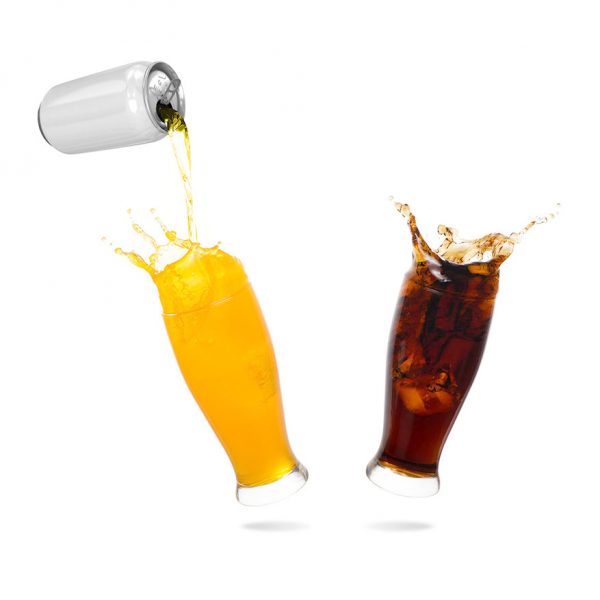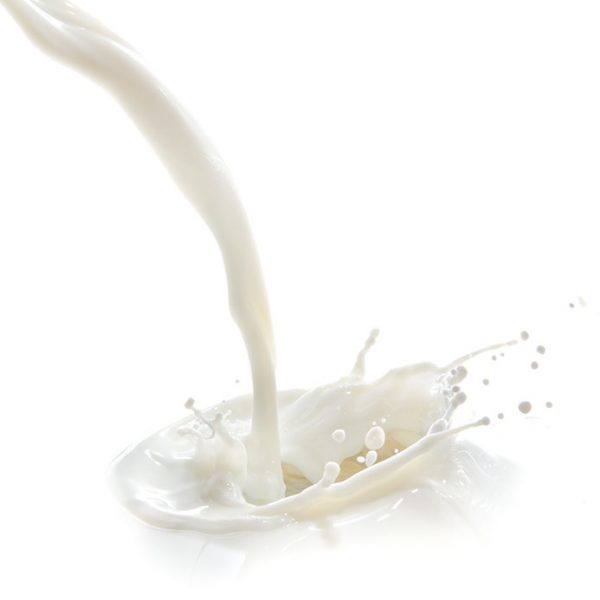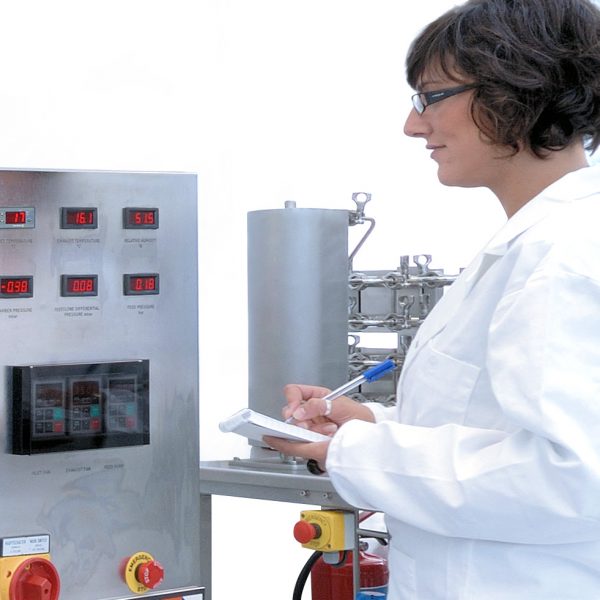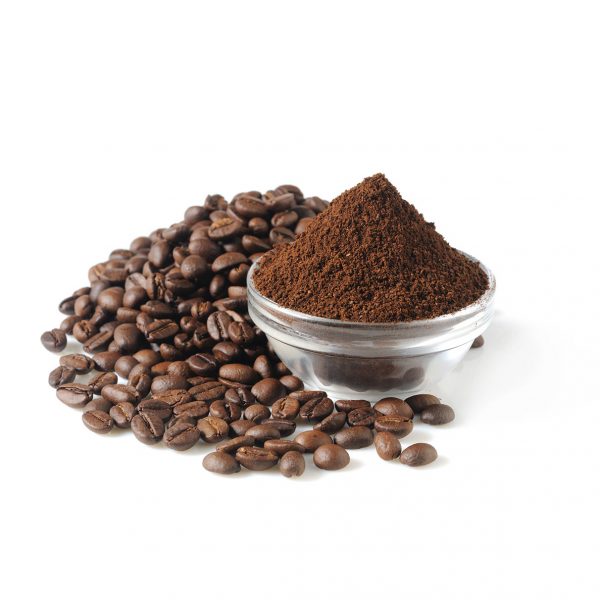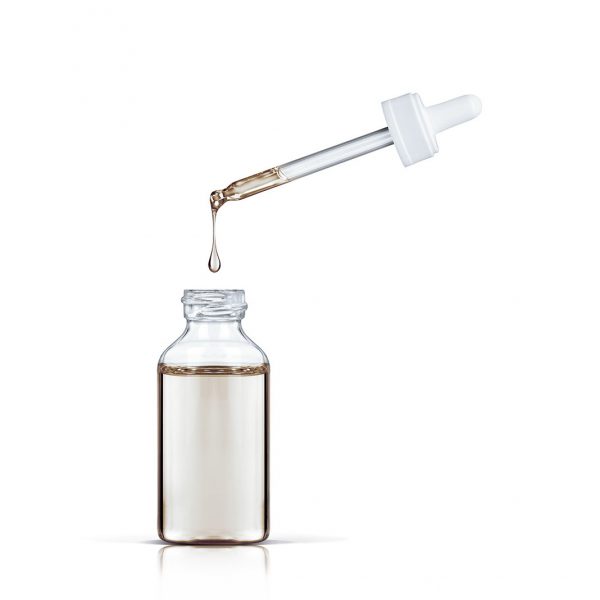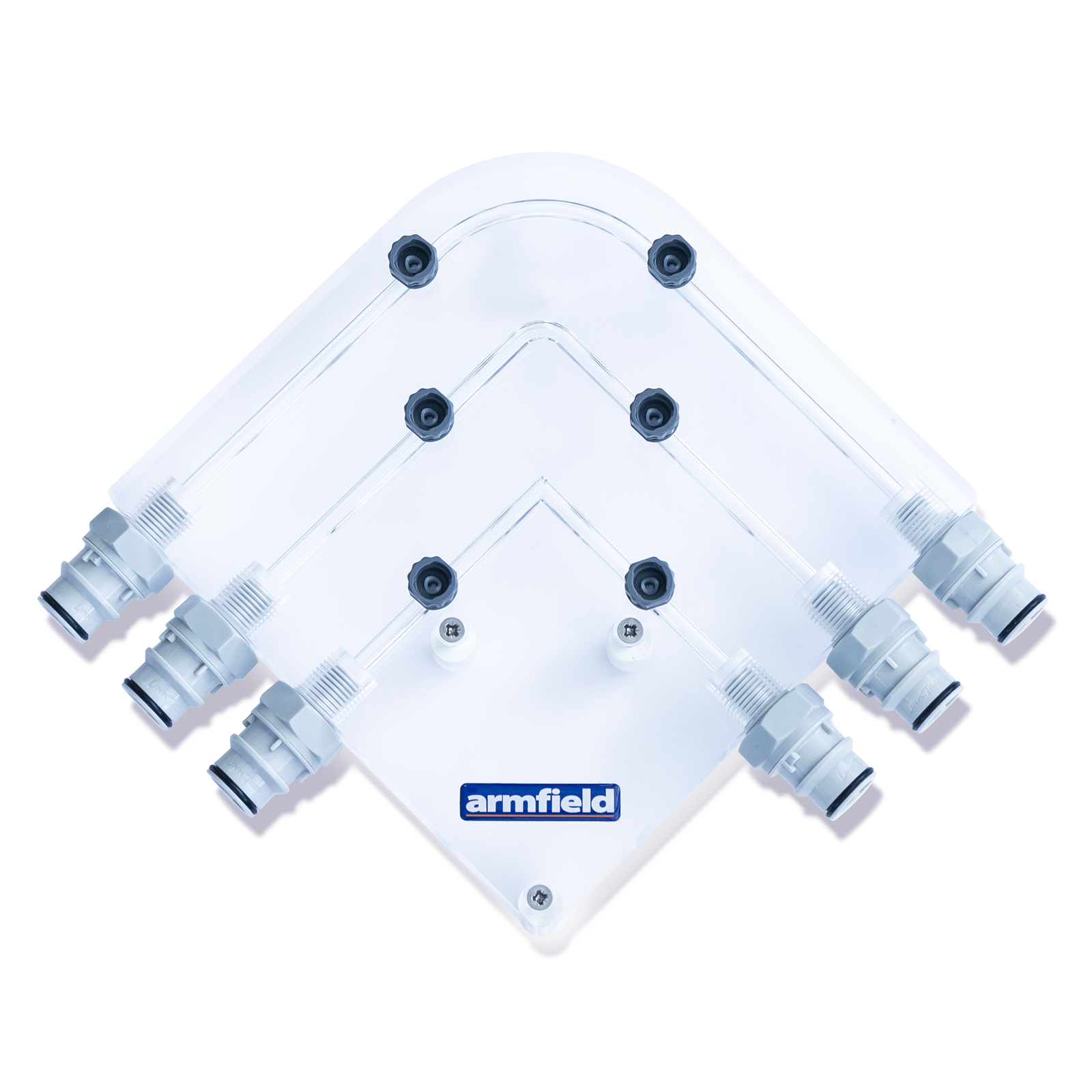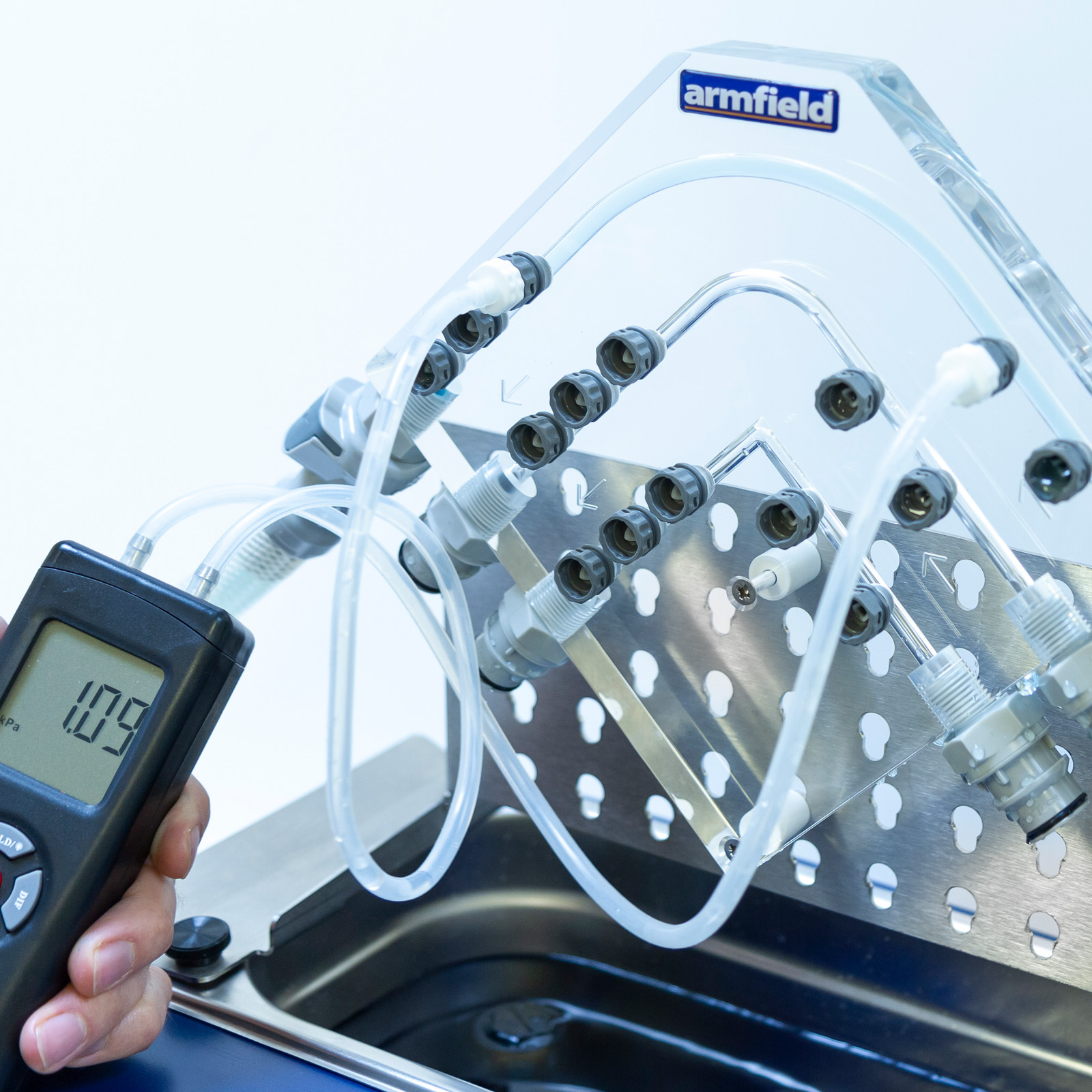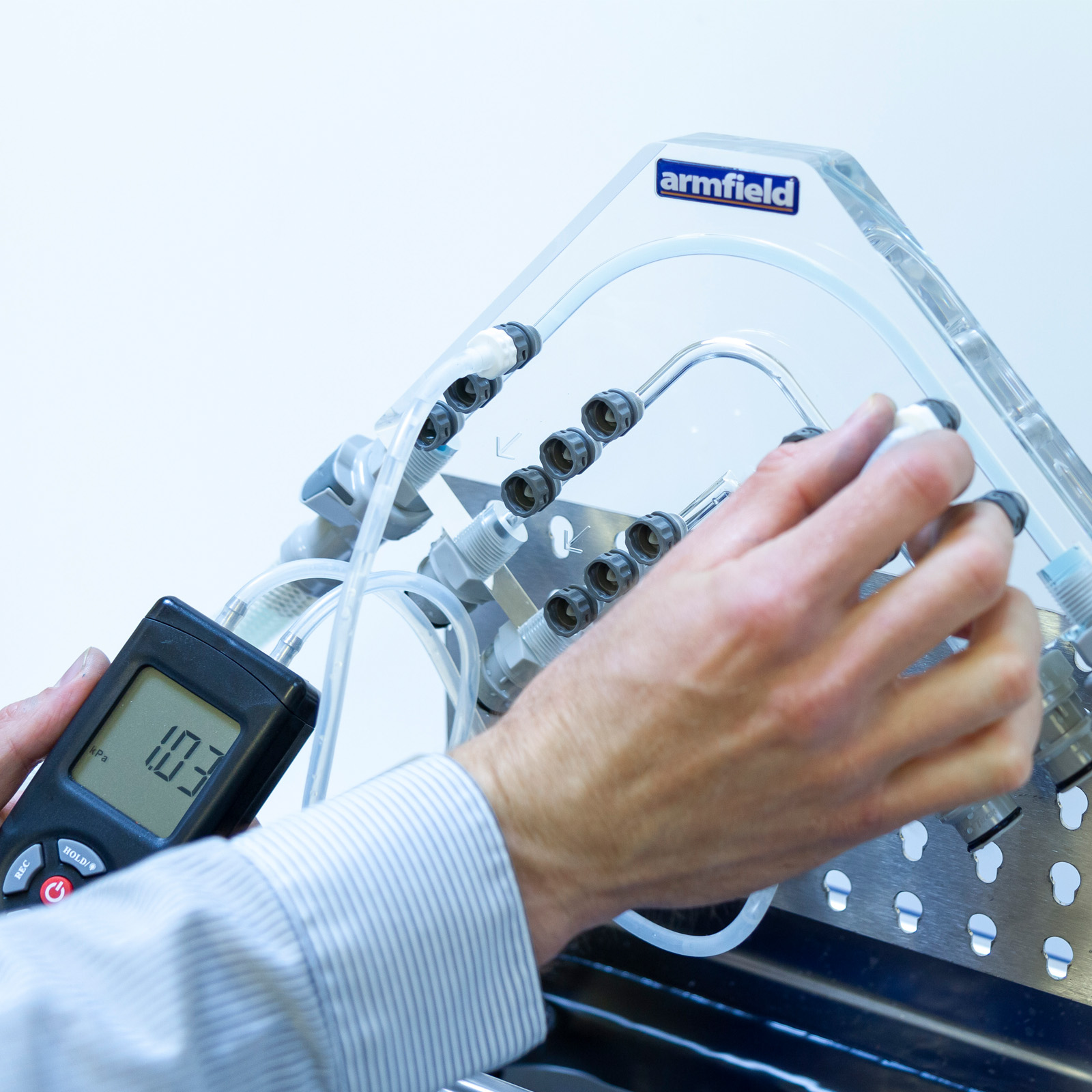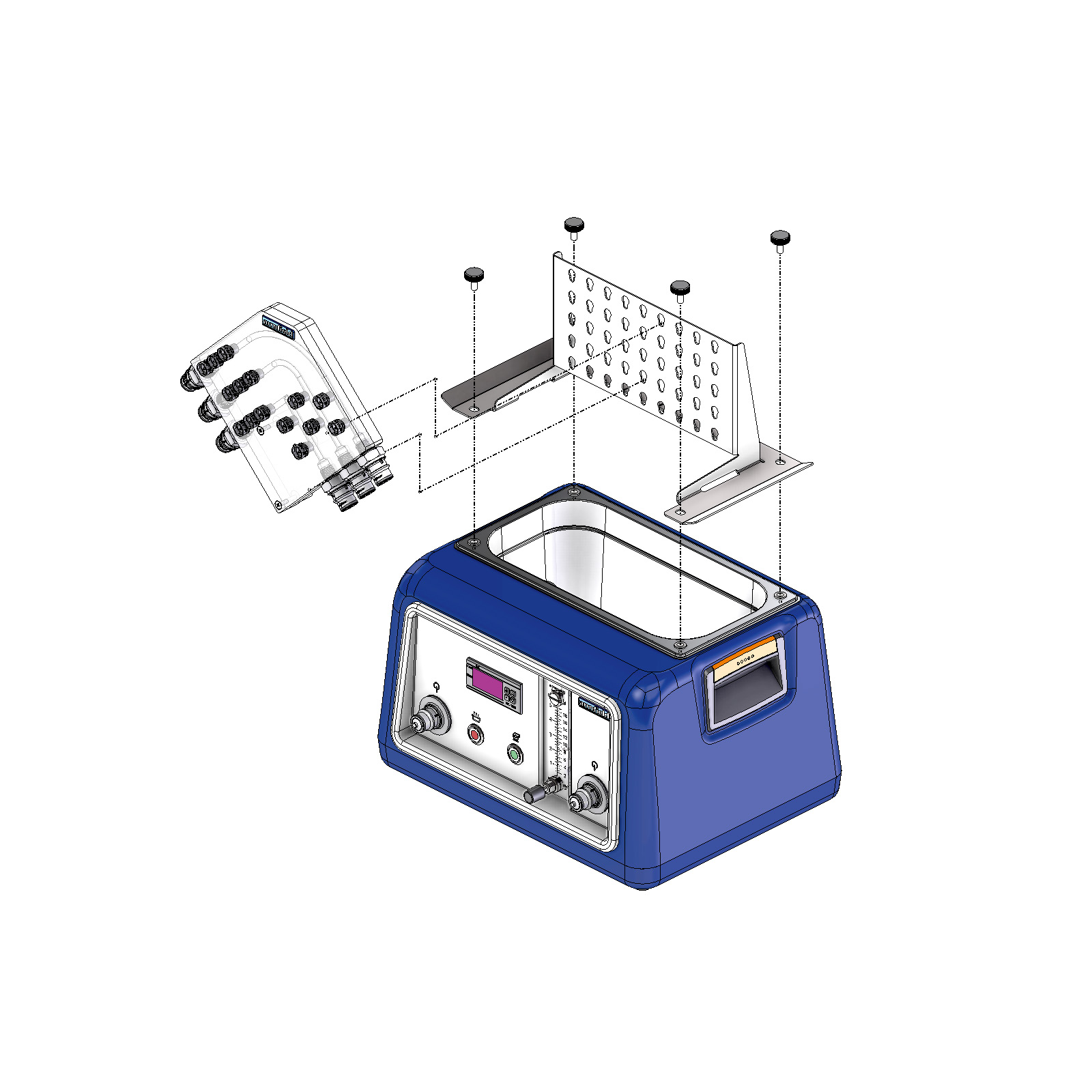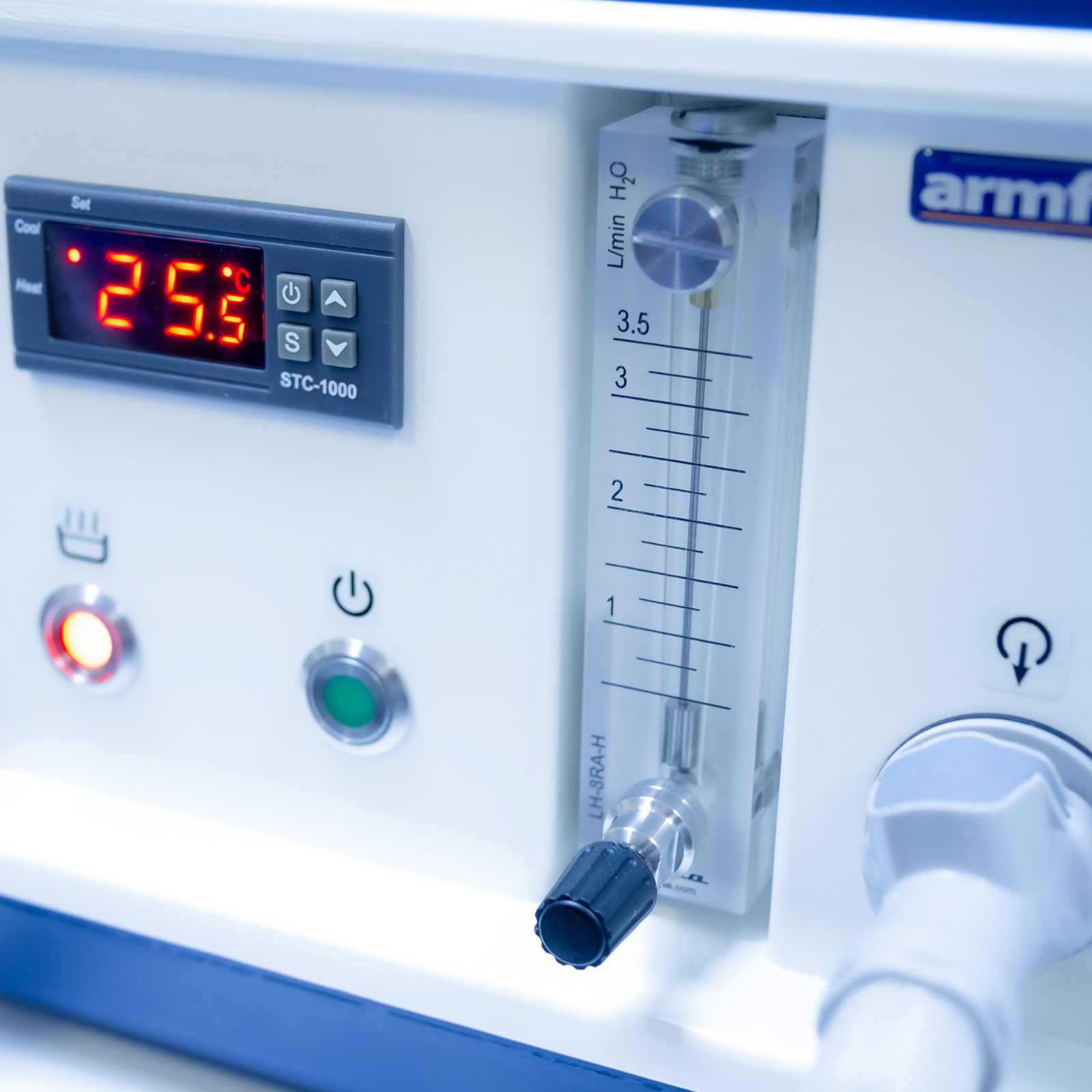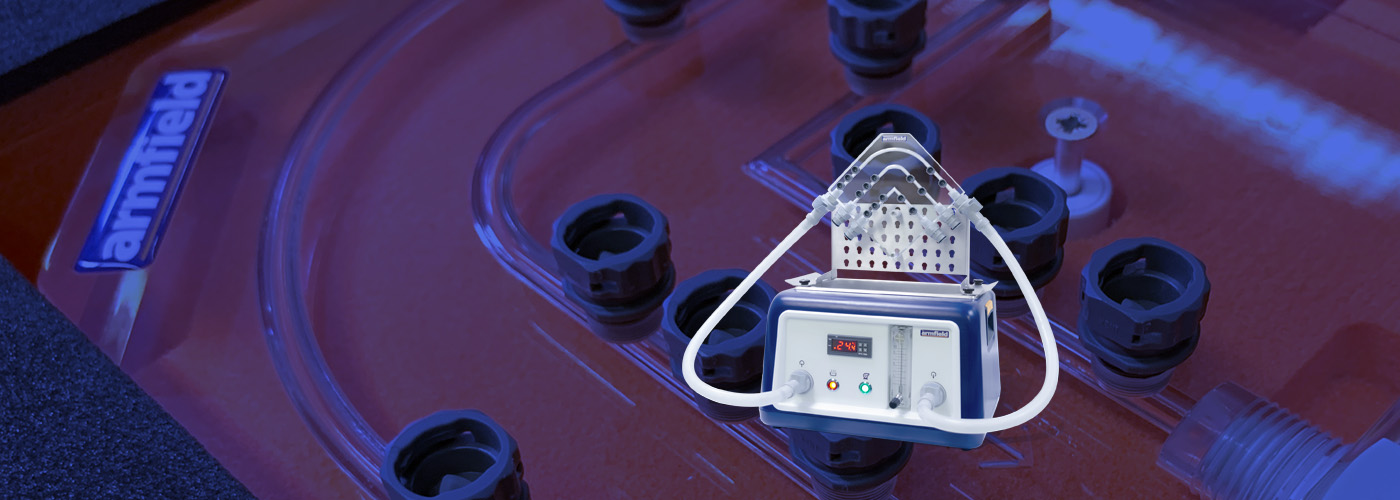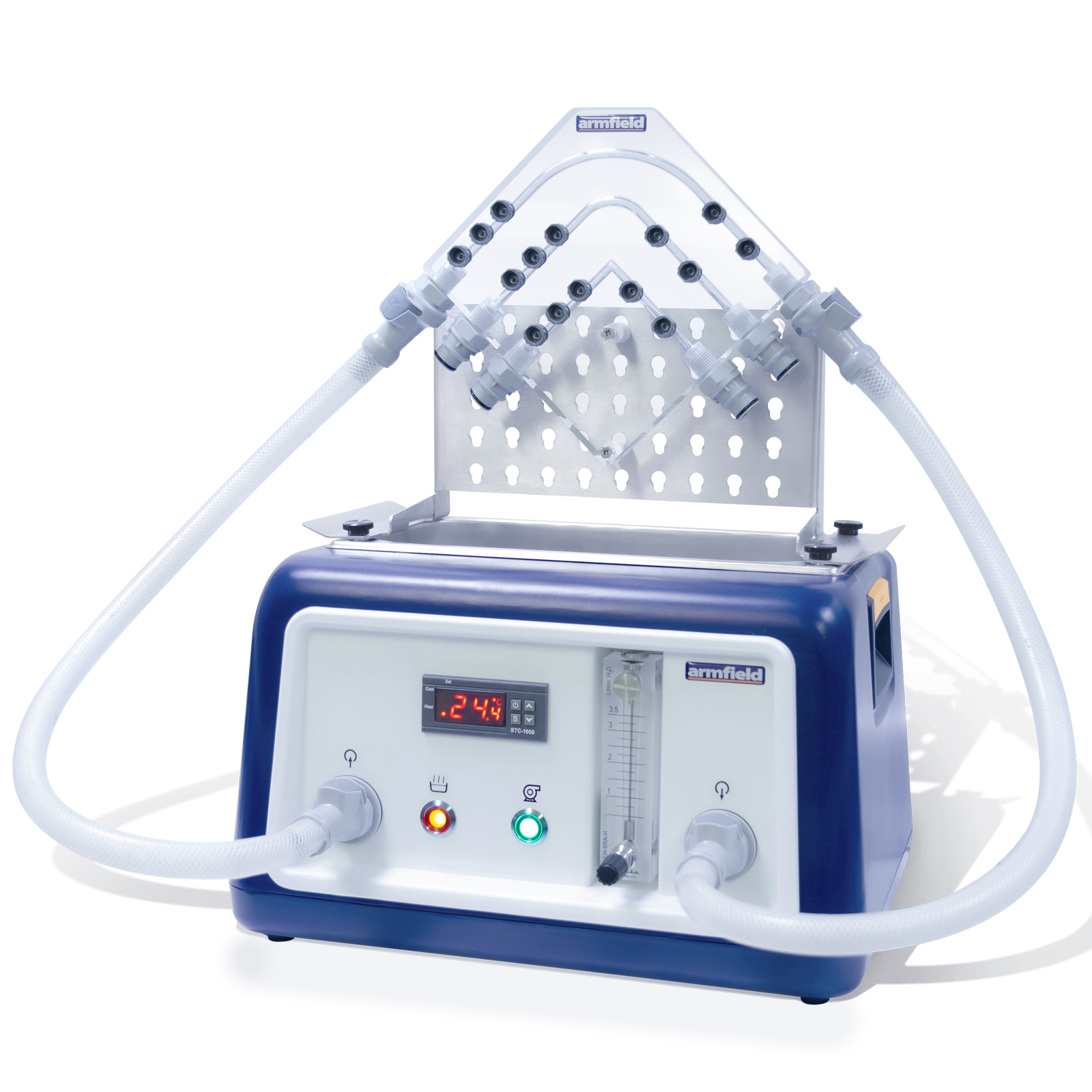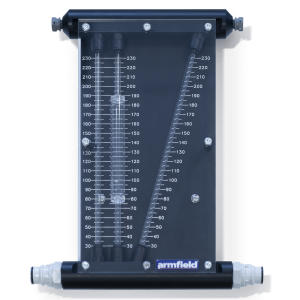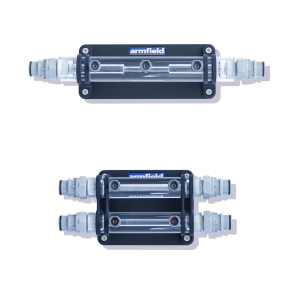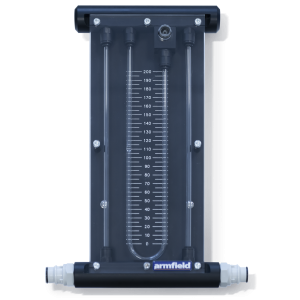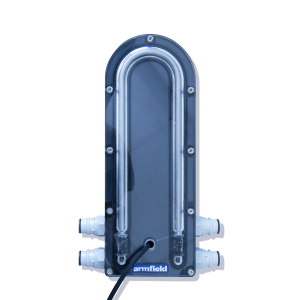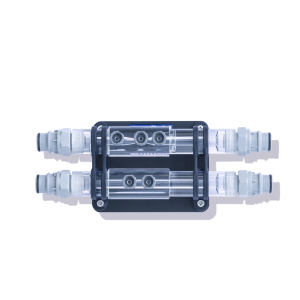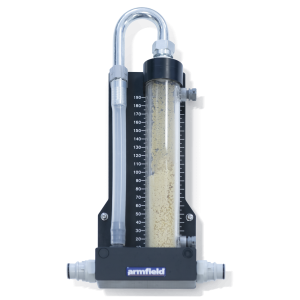FS-1.3 Energy Losses in Bends
The Fluid Science Energy Losses in Bends Tray includes experiments to measures the pressure drop across, a smooth bend, a tight bend, a Mitre bend. All the pipe test section are of the same cross section, enabling meaningful comparisons to be made.
The additional energy losses due to the geometry of the flow path can be clearly seen at different flow rates and the relationship to theory can be established.
Description
The Fluid Science FS-1.3 Energy Losses in Bends Systems Tray provides hands on experimentation designed to demonstrate energy losses due to the geometry of the flow path at different flow rates.
Utilising the FS-SU service unit the experiments rapidly mount onto the multifunctional work panel and is connected to the built-in water supply via quick connect couplings.
The differential pressure reading is taken using a digital manometer against varying flow rates.
The tray includes the following Hydraulic Circuits:
Energy losses in Bends
- Shallow bend Radii 42mm, 6mm diameter
- Tight Bend Radii 9mm, 6mm diameter
- Mitre Bend, 6mm diameter
Technical Specifications
Features & Benefits
Features
- Shallow bend Radii 42mm, 6mm diameter
- Tight Bend Radii 9mm, 6mm diameter
- Mitre Bend, 6mm diameter
- Differential pressure reading obtained using digital manometer
- Highly visual design
Benefits
- Applied student learning via experimentation
- Common service unit can be used for either hot or cold-water supply
- Tool-less assembly
- Designed to be highly visual and simple to use
- Quick setup
- Suitable for both classroom and laboratory environment
- Explanation of basic principles such as conservation of mass
- Conservation of energy
- Explain energy loss and frictional loss
- Types of flow steady and unsteady flow, uniform and non-uniformflow etc
- Types of fluid flow regime i.e. laminar, turbulent and transitional flow
- Compare measured pressure drop from 3 different pipe forms, explaining the effect of geometry on pressure drop
- Using Bernoulli’s equation, calculate the pressures and compare results with experimental values
- Calculate the frictional head loss and pressure drop using Darcy’s equation
Fluid Science Range
- FS-SU – Service Unit
- FS-1.1 – Flow Measurement
- FS-1.2 – Energy Losses – Straight Pipes
- FS-2.1 – Manometer – Inclined
- FS-2.2 – Manometer – U tube
- FS-3.1 – Heat Exchanger – Shell and Tube
- FS-3.2 – Heat Exchanger – Tubular
- FS-3.3 – Heat Exchanger – Cross Flow
- FS-3.4 – Heat Exchanger – Plate
- FS-4.1 – Fluidised Bed
FS-SU Fluid Science Service Unit
Electrical supply:
- 100-240V/1 Phase, 50-60Hz
Initial fill of 5ltrs water. Drain to empty water away once experiment is complete. During use, water supply or drainage are not required.
Packed and created shipping specifications
Net weight: 1.41Kg
Gross weight: (Tray only) 4.02Kg
Dimensions Stowed – Trays measure
Length: 0.43m
Width: 0.312m
Height: 0.080m
Dimensions Set Up for Energy Loss in Bends Experiment
Length: 0.21m
Width : 0.092m
Height: 0.064m
- FS-SU
- FS-1.3
